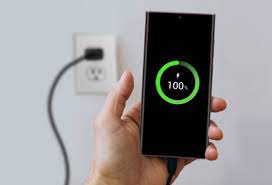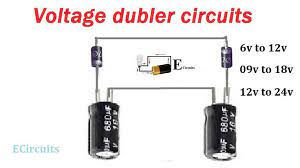
Let us first review the knowledge of secondary school physics:
What is Fast Charging? It can be seen that power is proportional to voltage and current respectively,
that is, higher voltage and larger current can bring greater power,
which is the basic principle of fast charging.
It can be seen that under certain resistance and time conditions,
the greater the current, the greater the heat generation, and it will be extremely dangerous.
Therefore, in line with the principle of “tens of thousands of wires,
safety first”, the choice of fast charging lines must not only be cheap.
- Increase the voltage:
When charging, the charger first transforms 220V into 5V/ 9V/ 12V. - There is a charge controller (IC) in the mobile phone,
- which reduces the low voltage to a low voltage and high current, so as to achieve the purpose of fast charging. This is the classic QC2 .0 solution.
Two ideas:

So in fact, the charging speed of the mobile phone is actually controlled by the mobile phone, not by the charging head.
The controller chip can regulate the overall current flowing into and out of the battery,
which can prevent dangerous peak currents.
But everything has advantages and disadvantages. The conversion rate of the charge controller (IC) to voltage is not 100%. Some power will be converted into heat loss.
The higher the voltage, the greater the heat, and the greater the loss. In addition, the bright screen of the mobile phone will also generate heat,
and the superposition of the two will cause huge heat. Therefore, high temperature will reduce the power and increase the charging time, which is also for safety reasons.
In 2015, Qualcomm QC3.0 was released. . The minimum voltage starts from 3.6V and the maximum voltage is 20V. Use 200mV as the step voltage to adjust step by step.
Greatly reduce the loss caused by QC2.0 during 9V/12V switching, and effectively reduce the heat generation during fast charging.
- Increase the current:
In order to avoid the loss of the secondary step-down of the charge controller (IC), - another solution is to directly use the low-voltage and high-current without going through the step-down process of the IC. This is the OPPO solution.
- But ordinary charging cables can only withstand up to 2A current, so Green Factory has made a complete set of solutions, customized from the beginning to the line. Although it reduces losses and improves efficiency, customized chargers and charging cables also bring compatibility issues.
- Simultaneous adjustment:
Because the current limit of mobile phone batteries is almost 5V 5A, which is 25W, - and the current fast charging protocols over 25W on the market are basically proprietary protocols.
- The voltage conversion efficiency of the charge controller IC mentioned above is limited.
- The charge pump IC can achieve higher efficiency and can also generate an output voltage greater than the input voltage. Such as Huawei’s SuperCharge uses this technology.
Several common charging protocols:
Regarding the charging protocol, it’s more common to say that when the wireless charging sends out:
“How are you?”, the mobile phone understands that the other party and you are in the same language (fast charging protocol),
so they also say in a friendly way: “I’m fine, thank you you, and you?”, the two sides shook hands successfully and began to charge.
USB-PD
Voltage and current maximum power USB-PD9V2A18W
Both Apple and Google currently use the USB-PD protocol. This year,
the charging power of the three iPhone 11 models can reach 22 watts, while the previous models have a maximum charging power of only 18 watts.
Qualcomm Quick Charge
Maximum voltage and current power QC1.05V2A10WQC2.05V/ 9V/ 12V1.67A / 2A18WQC3.03.6V-20V (200mV increment) 2.5A/ 4.6A18WQC4.0+5V/ 9V (USB-PD), 3.6V-20V (200mV Incremental) 3A (USB-PD), 2.5A / 4.6A27W (USB-PD)
Note that QC3.0 is not compatible with USB-PD.
Oppo VOOC/SuperVOOC
Voltage and current maximum power VOOC5V6A30W Super VOOC10V6.5A65W
Huawei SuperCharge
Voltage and current maximum power SuperCharge4.5-10V4A / 4.5A / 5A40W
Unlike other proprietary charging protocols, Supercharge is compatible with USB-PD and QC.
Written at the end:
Although the current fast-charging agreement is contending with a hundred schools of thought
and a hundred flowers blooming, everyone has only one purpose, which is to give users the fastest charging speed.
I believe that in the future, driven by the two giants of Apple and Google, the full popularity of USB-PD will only be a matter of time.

7 thoughts on “What is Fast Charging?”
Itís difficult to find experienced people in this particular topic, but you seem like you know what youíre talking about! Thanks
Thanks for your blog, nice to read. Do not stop.
אני מאוד ממליץ על אתר הזה כנסו עכשיו ותהנו ממגוון רחב של בחורות ברמה מאוד גבוהה. רק באתר ישראל נייט לאדי https://romantik69.co.il/
Hello to all, how is all, I think every one is getting more from this site, and your views
are fastidious in favor of new viewers.
Hi! Sorry i just curious, what template did you use for your website? I want to use it on my website at https://www.gdiz.eu.org
Thank you!
What the right words … super, brilliant phrase